Resource distribution has been an establishing factor in hierarchies and levels of poverty, a trend that is apparent within modern and historical time-frames. In every society, the polarization of wealth, income, property, and even basic amenities has forged internal societal divisions that often perpetuate civil unrest and regime changes. Likewise, the environmental strain put upon the integrity of the world further contributes to the implicit sense of desperation and the existent decline in quality of life. As a historical phenomenon, this has developed beyond mere chronological fact or an observable pattern; it has helped define our basic perceptions, our priorities and ideologies, and our culture, which artists, authors, and thinkers identify.
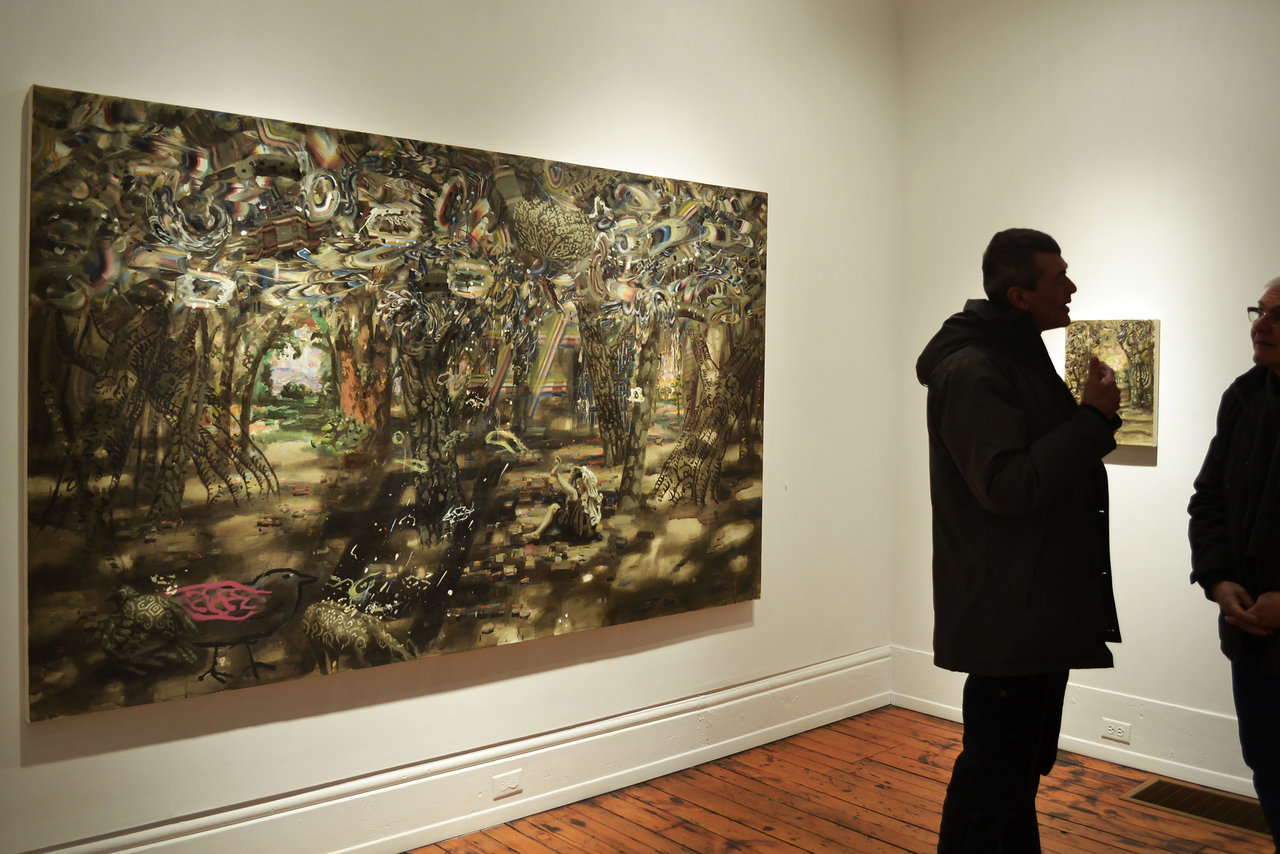 Installation view with Carol Wainio, And the small birds did sing #3, 2016, acrylic on canvas, 60″ x 100″
Installation view with Carol Wainio, And the small birds did sing #3, 2016, acrylic on canvas, 60″ x 100″
Carol Wainio, the artist behind the “Dropped from the Calendar” series, continues this exploration through the combination of literary and visual elements that display these prevailing themes as disseminated through folklore and popular imagery. Her work investigates “how material, economic and political conditions shape consciousness, how the magical transformations of peasant to prince in fairy tale reflect conditions of scarcity and hierarchy prior to social mobility, which gave birth to stories where it had to be imagined” (Wainio).
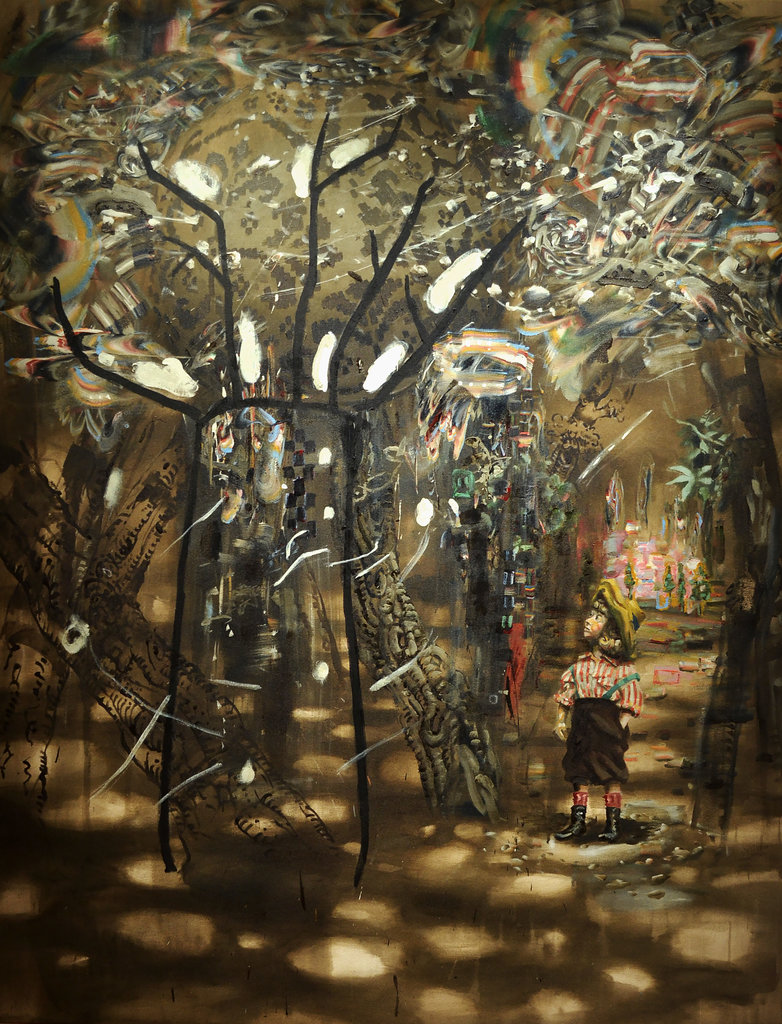 Carol Wainio, North Pole, 2016, acrylic on canvas, 78″ x 60″
Carol Wainio, North Pole, 2016, acrylic on canvas, 78″ x 60″
Wainio draws stylistic and thematic inspiration from numerous figures emerging from the Industrial Revolution – most notably Walter Benjamin, who himself alluded to Marx and Freud in his literary and cultural analyses. Reminiscent of an older time, Benjamin recognized the degradation of “experience,” a term he associated within a particular historical context and specified its production rather than its subject matter. With industrialism and urbanization came a fundamental “speeding up of life” that quintessentially blunted the memorability of personal experience. Fairy tales such as “Puss in Boots” and “Hansel and Gretel” evoked such strong sentimental attachments in parents and children because it appealed to the existing states of scarcity intrinsic to society and offered a temporary outlet. With this knowledge, the image of “Puss in Boots” was successfully appropriated through consumer culture, appearing in advertisements and product brands: what was once a narrative about humility and salvation was now a commodity appealing to the audience’s nostalgia and sentimentality. Consequently, individual experience became homogenized under a consumer culture where possessions equated with status and character.
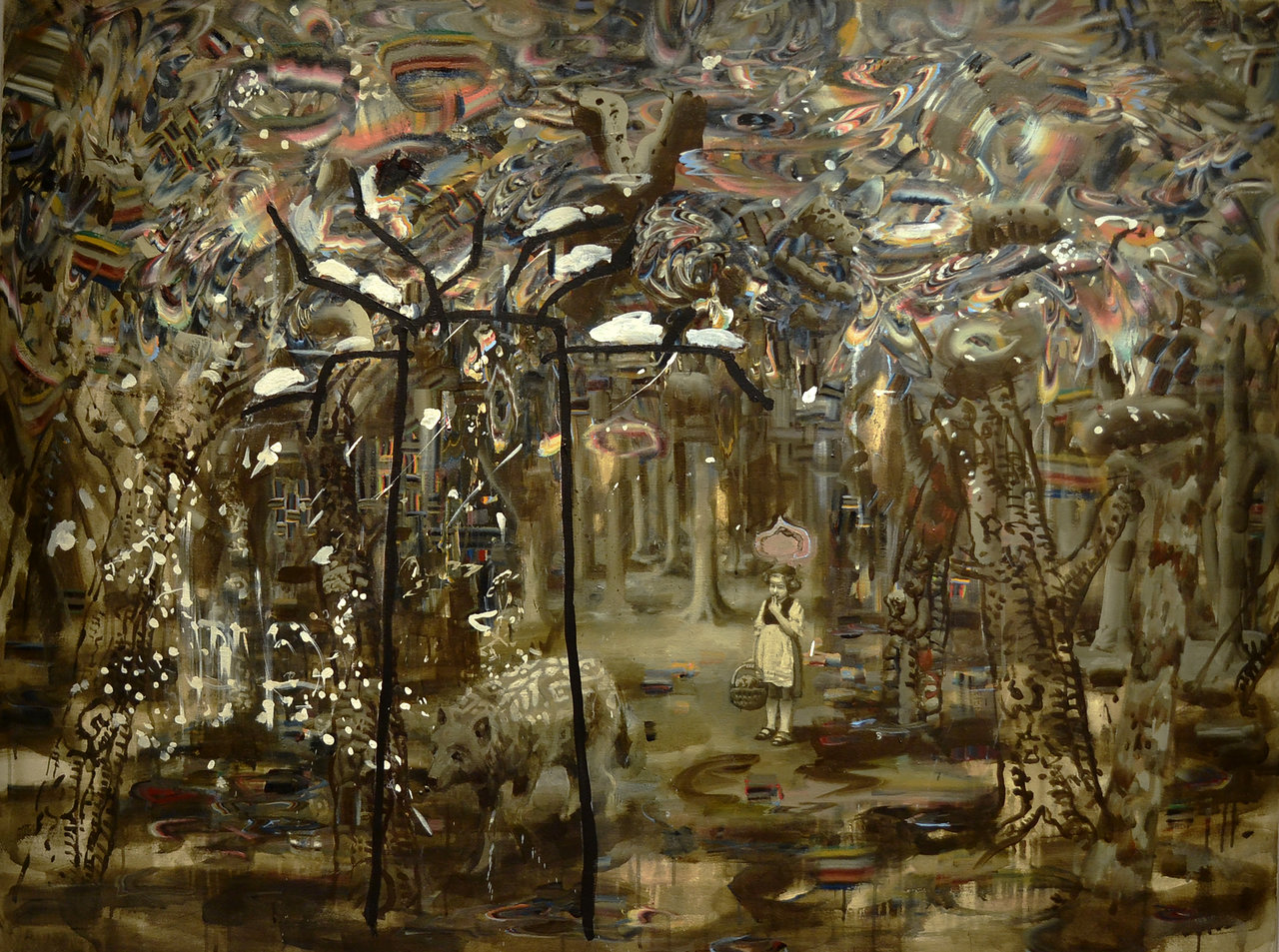 Carol Wainio, The Wood, 2015-2016, acrylic on canvas, 44″ x 58″
Carol Wainio, The Wood, 2015-2016, acrylic on canvas, 44″ x 58″
The Fall is an aesthetically resonant series that engages the audience into visual chronicles that repeatedly contrast the pleasant with the dystopic. In these works, the images of playing children – inspired by the fairy tale illustrations of J.J. Grandville and popular imagery found in 19th century advertisements, cartes-de-visite, and publications – interact and explore these mysterious scenes that seem to continually decay and unravel around them. Wainio incorporates illustrative stylization, expressionistic brushstrokes, child-like drawings, and pictorial representations of technological and mythological subjects into complex, surrealistic worlds that invoke contradicting responses simultaneously: wonderment and uncanniness, comfort and angst, curiosity and suspense. It is as if the audience were immersed into the fairy tale directly, or into a wistful memory, witnessing its elegance and grandeur slowly fade away with only mere glimpses to its past.
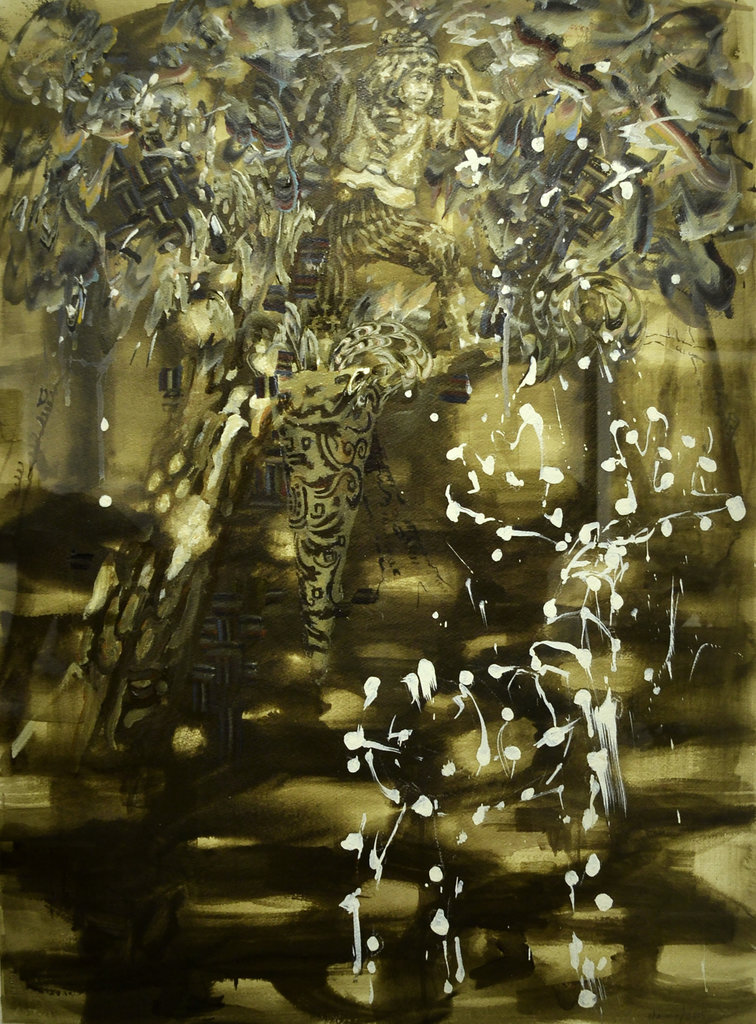 Carol Wainio, Futur Proche, acrylic on paper, 2015, 30″ x 22″
Carol Wainio, Futur Proche, acrylic on paper, 2015, 30″ x 22″
Much like “Dropped from the Calendar,” Wainio’s overall style consists of a variety of different motifs, palettes, and aesthetics into something distinct. The broader landscape composed of dark and diluted colors to emphasize the fading realm, with intricate, seemingly codified patterns dispersed throughout. The trunks of the trees assume a more illustrative visage with thick crosshatching to suggest the rough texture of the wood while still maintaining its three-dimensionality. Hidden within the recesses of the canvas, in the picturesque fairy tale landscapes curious children peak from beneath the looming decay. Finally, simplistic, broad-lined drawings cover the painting that resemble the jovial manifestations of a child’s imagination.
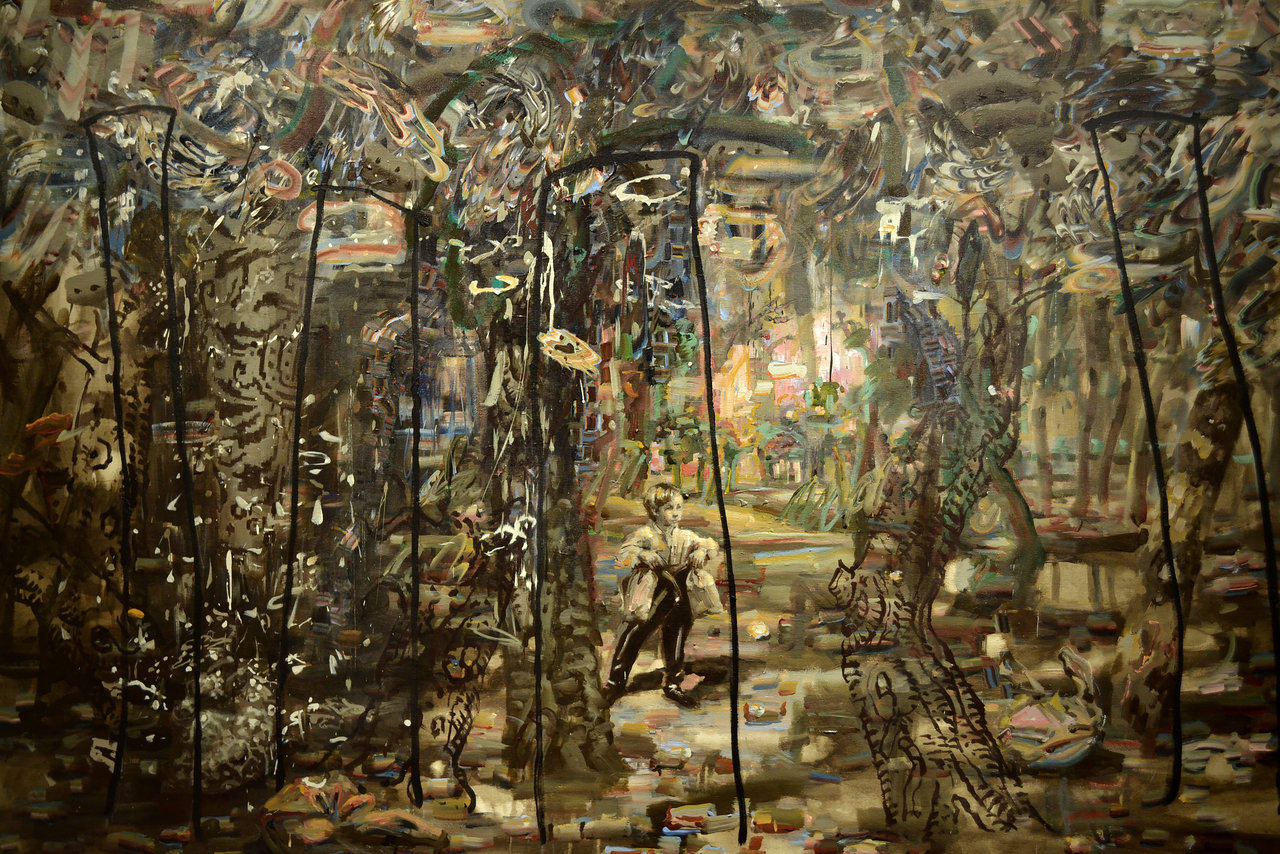 Carol Wainio, Trail (detail), 2015, acrylic on canvas, 54″ x 66″
Carol Wainio, Trail (detail), 2015, acrylic on canvas, 54″ x 66″
Wainio once again delivers a thought-provoking and powerful narrative that delves into important cultural and experiential themes with subtle political and environmental undertones. She offers a unique opportunity for the viewers to reflect on deeply personal connections as well as to apply these observations to external issues. She encourages the audience to consider how modern culture and technology dim the value of our experiences through an unrelenting stream of information and the commodification of our memories, most notably from our treasured childhood narratives.
Text and photo: Simon Termine
*Exhibition information: February 19 – March 19, 2016, Paul Petro Contemporary Art, 980 Queen St West, Toronto. Gallery hours: Wed – Sat, 11 – 5 p.m.
